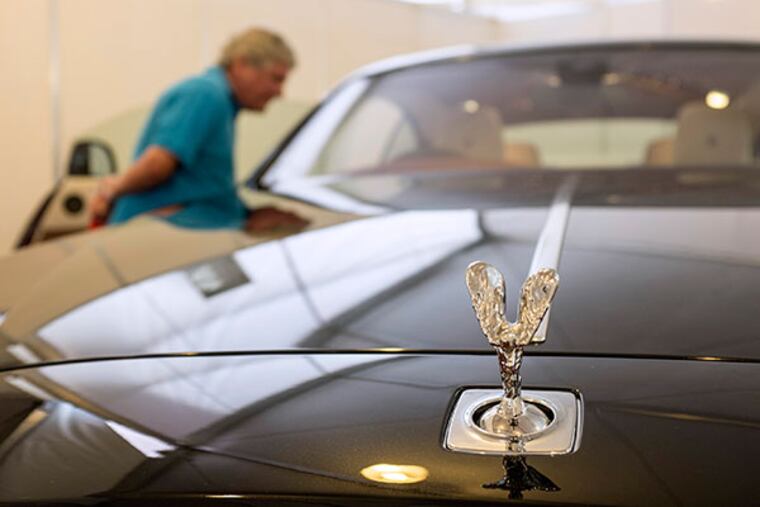Philadelphia U. hosts academics discussing luxury
They wallowed in luxury at Philadelphia University this week: Hermes, Prada, Gucci, Louis Vuitton, Chanel, Rolls-Royce. As academics are want to do, they wrestled with what it is, how it is acquired, what makes it stand apart.

They wallowed in luxury at Philadelphia University this week: Hermes, Prada, Gucci, Louis Vuitton, Chanel, Rolls-Royce.
As academics are want to do, they wrestled with what it is, how it is acquired, what makes it stand apart.
Its very definition was knocked about until international fitting guru Edward Gribbin put a humorous end to the debate.
"I like to say that the definitions of luxury are like speed limits in Italy," said the St. Joseph's University graduate, who is president of Alvanon, a firm that helps apparel-makers establish sizing standards for their brands. "That is, well-intended suggestions, but not necessarily a requirement."
And so it might seem - from the range of individual tastes displayed at the seminar - that the gathering was far more entertaining than suggested by its title: the Third International Workshop on Luxury Retail Operations and Supply-Chain Management.
From that, the uninitiated could hardly imagine what could be gleaned over two days: Hermes handbags have an extraordinary resale value (try upward of $160,000), aficionados of such brands also have a tendency to knowingly acquire counterfeits of rival products, and Prada's Patrizio Bertelli once turned up late for a meeting with Gribbin dressed like a "bum," holes in his cashmere sweater, shirt untucked, his hair an unmade bed.
(Despite Bertelli's disheveled appearance, the Italian fashion boss was all business. "In his best South Philadelphia, he says, 'What about the discount?'" Gribbin recalled.)
The seminar was assembled by two Philadelphia University educators - Maria-Eve Faust, who teaches fashion merchandising, and Marcia L. Weiss, associate professor of textile design - in conjunction with Alessandro Brun, director of career development at MIP Politecnico in Milan, Italy.
More than two dozen academics presented papers at the Philadelphia University session. Topics ranged from the recycling of high-end Scottish textile remnants to a comparison of international anti-counterfeit laws.
Despite the focus on luxury, the seminar was not necessarily a celebration of all that glitters. More than one participant questioned the greater value, if you will, of luxury.
Bradley Thompson, director of sustainable agriculture at Baltimore County Community College, bemoaned the fact that some of the world's wealthy would spend in excess of someone's yearly salary on a handbag. That aside, he was interested in suggestions on how he could make a luxury item out of the blueberries his family has grown for generations.
Brun, who is marketing his own line of high-end fragrances, was quick to offer a marketing plan: First, make a selling point of the farm's history. Find local opinion-makers who can talk up his fruit. Persuade high-end bakeries to use - and brag about using - his fruit in their own products.
Brun, himself, is an unabashed defender of luxury. "I believe that true luxury is a product with a soul, an artisan heart," he said. "Luxury is good, I believe. It creates jobs. It makes people happy."